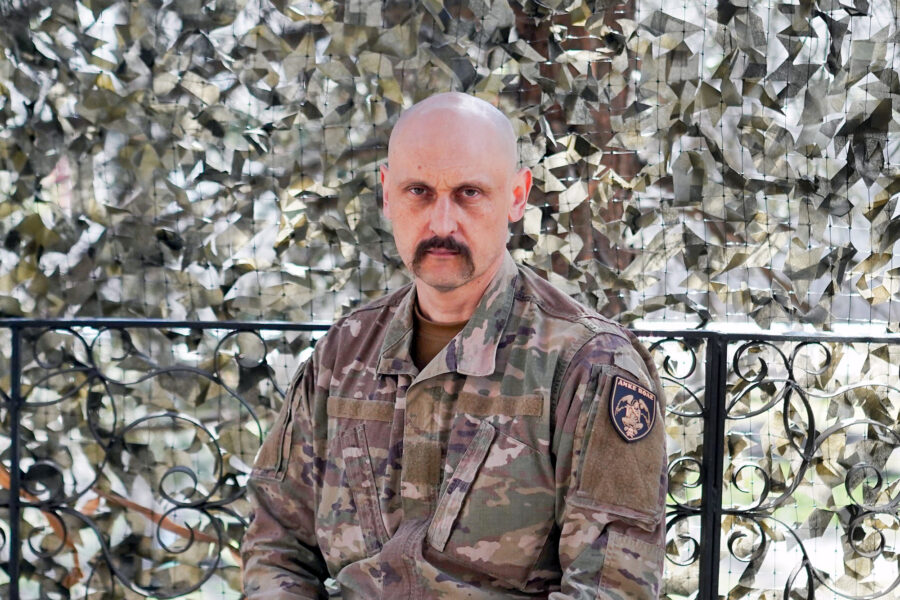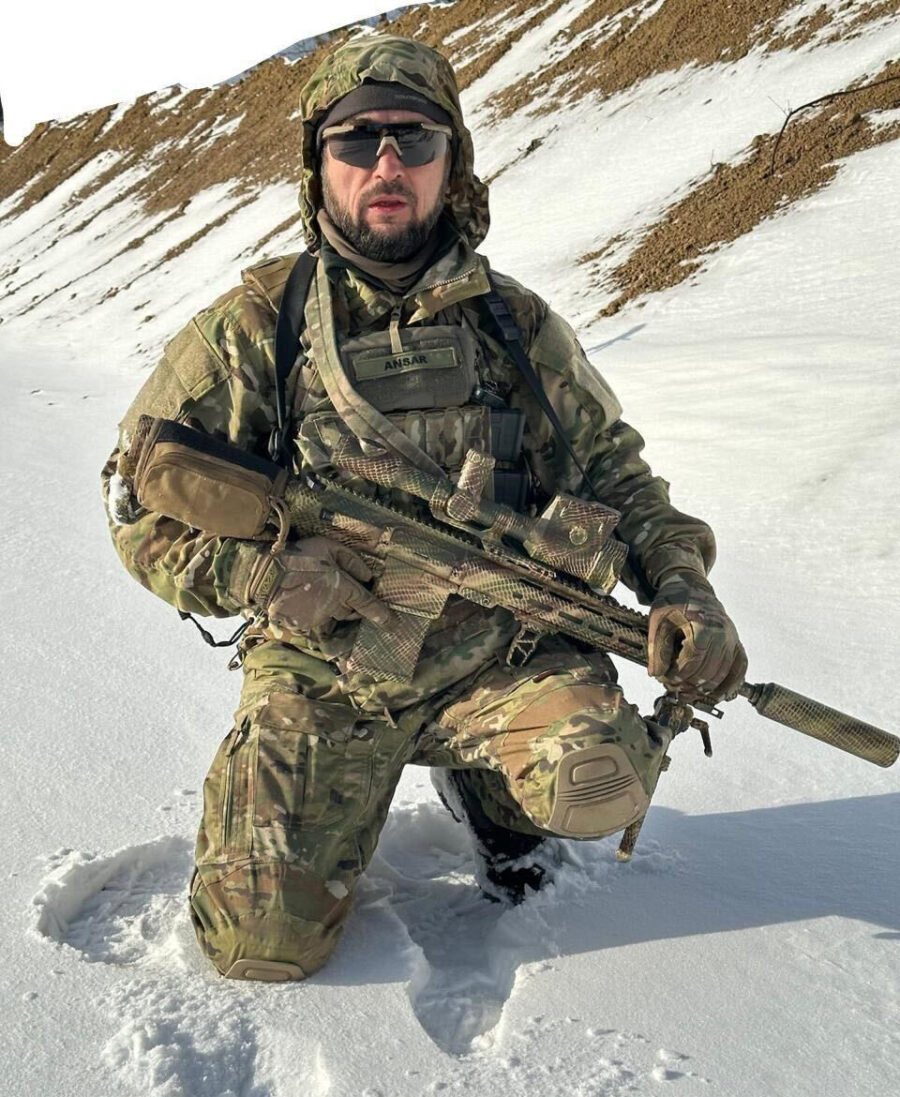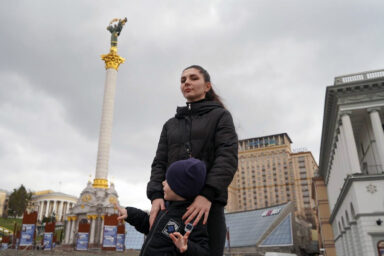Ukraine has managed to hold the line while Congress dithered over its new aid package. That said, help will arrive not a moment too soon.
|
Listen To This Story
|
DONETSK OBLAST, Ukraine — “The situation is bad, and it will get worse,” observes Dmytro, the new commander of Ukraine’s 67th Motorized Brigade. Dmytro is better known by his call sign “Perun.” We are sitting in the dining hall of an abandoned factory near Lyman in the Donetsk Oblast.
Perun, 40, clearly looks concerned about recent developments affecting Ukraine’s front line. “The aid from Europe will let us hold on for some time,” he says, “but it is the American aid that will enable us to go on the offensive.”
Since the Russian capture of the eastern Ukrainian city of Avdiivka in mid-February and Vladimir Putin’s election to a fifth term as Russian president in March, attacks against Ukrainian positions have decreased.
But Russia remains on the offensive, with its forces concentrated around the small town of Chasiv Yar, roughly 18 miles from Kramatorsk, one of the Ukrainian army’s key logistical hubs in the Donbas. Ukrainians suspected that the Russians were trying to capture Chasiv Yar by May 9 in order to mark this year’s anniversary of the Russian victory over invading Nazi forces in World War II.
On the Ukrainian side, despite fatigue and the need to conserve ammunition, morale remains strong and has been bolstered by the substantial $61 billion in promised American aid. Ukrainian units at the front are holding the line and effectively doing everything they can to buy time until the American aid finally arrives.
There have been setbacks. On April 27, Russian troops managed to secure a foothold in Ocheretyne, about 9 miles northwest of Avdiivka and roughly 18 miles from Chasiv Yar. During the current fighting, local sources reported that the Russians used drones to drop canisters of riot gas on the town’s defenses, a violation of international law.
According to the Ukrainians, the Russians are now committing four brigades, anywhere from 20,000 to 25,000 men, to the campaign to capture Chasiv Yar. Despite the Russian foothold in Ocheretyne, the Ukrainians still manage to control most of the area around the city, and Russian forces that have reached the outskirts are vulnerable to attack from Ukraine’s artillery.

“We’re waiting for Czech shells, American aid, and F-16s,” says Perun, “but we’ve managed to stabilize the situation and we are now in position to maintain our defenses.” However, Perun acknowledges that Ukraine may be forced into a gradual retreat if the ammunition runs out and American aid still hasn’t arrived.
“The Russians know they don’t have much time,” he says, “so they are exploiting this window of opportunity and pushing as hard as they can before the aid finally gets here.”
The Lack of Men
Another critical issue is the shortage of men. Ukraine’s parliament recently authorized a new wave of mobilization, but it will take time before new troops arrive. In the meantime, fatigue on the front has become extreme.
“I’m a professional soldier. I know it’s my duty. But I just wish this new mobilization would allow for more rotation,” says Volodymyr, 40, a sergeant with an assault brigade who has had only four days’ leave since the Russians invaded. “Volunteers who have been here for the last two years need to rest,” he says, “but we also need more training.”
Perun, who commands the brigade, thinks that the training may be even more important than the lack of Czech artillery shells.
“It’s not just that we don’t have enough men,” he says, “but we don’t have enough time to train them properly.” Perun also notes that Ukraine is beginning to run out of its best commanders, many of whom were killed during the last two years of fighting.
Ukraine’s growing difficulties have nevertheless failed to diminish Perun’s determination. “We are going to win this war,” he says with a smile. “Maybe not this year, maybe not in two years, but however long it takes, we will win it.”
A New Strategy
Perun is not alone in his determination to see the Russians defeated. Ansar — commander of the Borz unit, an assortment of Chechen guerrilla fighters determined to support Ukraine — wants to take the fight to Russia, while at the same time exacting the maximum number of casualties from Russia’s attempts to grab more of Ukraine’s territory. “We have adopted a new strategy,” he says. “We let the Russians crash against our positions. Then we attack them in the Black Sea; we destroy their aviation; we attack their economy; we organize incursions into Russia, and soon we will destroy their bridge in Crimea.”

Ansar says that he recently led incursions into the region of Belgorod in Russian territory.
The new strategy, initiated by Ukrainian President Volodymyr Zelenskyy, has been accompanied by the construction of new fortifications along the entire front.
Perun is evasive about the fortifications and has some doubts about their effectiveness.
“A deep earthen trench does the job,” he says. “There is no need to spend a great deal of money on construction.” As Perun sees it, the critical factors are men and artillery.
For his part, Ansar predicts that Ukraine’s eventual victory will result from an implosion inside Russia rather than from a collapse of Russia’s front lines. “The Russians are good at assault,” he says. “They have the mass; they have the material. That’s why we attack them where they are weak and resist them where they are strong.”
Ansar thinks that Russia’s eventual defeat will take everyone by surprise. “It will come unexpectedly,” he says. “like during the Prigozhin revolt. No one expected it. That day, the Kremlin trembled.”
Ansar says the attacks inside Russian territory are intended to take the fear to Russia and to destabilize Moscow politically. He continues:
Ukraine has shown what it is capable of. It’s been six months since we’ve received a drop of American aid. Everyone said we were going to collapse, but in six months, we have only lost Avdiivka. In contrast, the Russians have confirmed 16,000 deaths. And besides that, we have regained control over the Black Sea.
Ansar says he is confident that the imminent arrival of Czech artillery shells and American aid will enable Ukraine to better hold the front line.
Perun agrees with that assessment. “Today, we can feel Moscow cracking internally,” he whispers, stroking his mustache, worn in the Cossack style. “The front will hold, and Russia will continue to crash against it. After all, every empire is doomed to collapse.”




